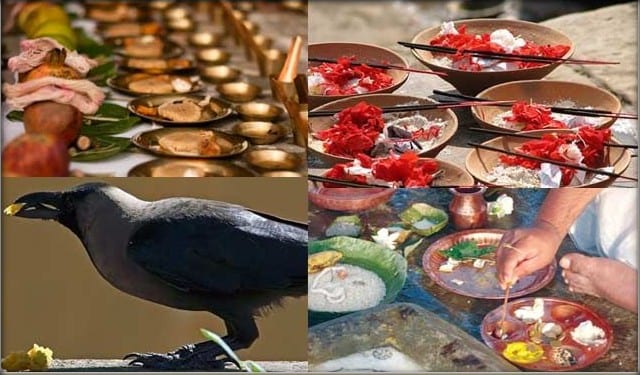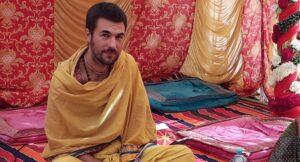

Pitru Puja and Tarpan in Austria and Germany
The Pitru Puja and Tarpan ritual is a deeply significant Hindu tradition, performed to honor departed ancestors and seek their blessings for peace, prosperity, and harmony. Now, with the guidance of Sahadev Pandit, families in Austria and Germany can perform this sacred ritual in alignment with Vedic traditions.
By conducting Pitru Puja and Tarpan in Austria or Germany, you not only pay homage to your lineage but also help bring solace to the souls of your ancestors, ensuring their blessings for future generations.

Significance of Pitru Puja and Tarpan
In Hindu culture, it is believed that the souls of our ancestors reside in the Pitru Lok and require spiritual offerings (Tarpan) to attain peace and liberation (Moksha).
The spiritual benefits of Pitru Puja include:
Resolving Pitru Dosha, a Vedic astrological condition caused by dissatisfied ancestors.
Invoking blessings for family well-being, health, and prosperity.
Cleansing negative karmic influences and fostering spiritual growth.
Tarpan, the act of offering water and sesame seeds, holds particular importance as it nourishes the souls of ancestors and fulfills their spiritual needs.
Why Choose Sahadev Pandit for Pitru Puja and Tarpan?
Sahadev Pandit is a highly experienced Vedic priest who specializes in conducting authentic Hindu rituals with devotion and precision. By choosing his services, you ensure:
Accurate performance of rituals as per the Shastras (scriptures).
Guidance on choosing auspicious dates and locations for the ceremony.
Tailored ceremonies that cater to your family’s specific requirements.
A respectful and serene environment for performing this sacred ritual.
Our services are available across Austria and Germany, making it convenient for you to honor your ancestors, no matter where you are.
Steps in Performing Pitru Puja and Tarpan
Selecting the Muhurat (Auspicious Time):
The ritual is ideally performed during Pitru Paksha or on specific tithis dedicated to ancestors.
Preparation for the Puja:
The family participates in a purification ritual, and the priest arranges the required items, including sesame seeds, water, rice, and flowers.
Offering Prayers:
Special prayers and mantras are chanted to invoke the blessings of deities and ancestors.
Tarpan Ritual:
The offering of water, sesame seeds, and other sacred items is performed to satisfy and honor the ancestors.
Concluding Ceremony:
The ritual concludes with blessings from the priest and the distribution of Prasad to family members and attendees.
Locations for Pitru Puja and Tarpan in Austria and Germany
We provide services for Pitru Puja and Tarpan in Austria and Germany across key cities, including:
Austria: Vienna, Salzburg, Innsbruck, Graz.
Germany: Berlin, Munich, Frankfurt, Hamburg.
The rituals can be performed at your home, in temples, or even at natural water bodies, such as rivers or lakes, for added sanctity.
Benefits of Performing Pitru Puja and Tarpan
Resolve Family Conflicts:
Dissatisfied ancestral spirits can lead to familial discord, which this ritual helps to resolve.
Improve Financial Stability:
Many believe that honoring ancestors brings prosperity and financial abundance.
Blessings for Future Generations:
By performing these rituals, you pave the way for the well-being of your children and future lineage.
Spiritual Growth and Peace:
Participating in such a profound ritual fosters spiritual growth and inner peace.
FAQs About Pitru Puja and Tarpan
What is the best time to perform Pitru Puja?
The most auspicious time is during Pitru Paksha, the fortnight dedicated to ancestors in the lunar calendar. However, specific tithis such as Amavasya (new moon) are also suitable.
Can Pitru Puja be performed without water bodies nearby?
Yes, the ritual can be adapted to be performed at home or in a temple, even without access to rivers or lakes.
What items are needed for the ritual?
Common items include black sesame seeds, darbha grass, water, rice, and flowers. A detailed list will be provided by the priest.
Do I need to know my family’s ancestry for this ritual?
While it helps to know your ancestors’ names, the ritual can still be performed even if this information is unavailable.
Can Pitru Puja resolve Pitru Dosha?
Yes, performing this puja under the guidance of a Vedic priest can alleviate the effects of Pitru Dosha in your astrological chart.
Can I combine this puja with other rituals?
Yes, it is possible to combine Pitru Puja with other ceremonies like Narayan Bali Puja or Shraddha rituals for enhanced spiritual benefits.
Book Pitru Puja and Tarpan in Austria and Germany Today
Honor your ancestors with devotion and authenticity by booking Pitru Puja and Tarpan in Austria or Germany with Sahadev Pandit. Allow us to guide you through this sacred process, ensuring that every aspect of the ritual is performed with care and precision.
For inquiries and bookings, visit the Pitru Puja and Tarpan Service Page or contact us directly.
